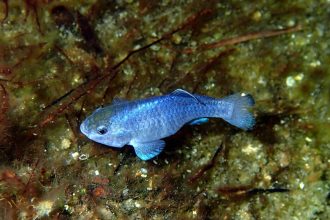In September, I said that while Wave Life Sciences Ltd. (NASDAQ:WVE) had excellent early data, they needed cash. In December, WVE fell sharply after raising that much-needed cash. We want to explore if the market reaction was correct.
Wave Life Sciences develops stereopure oligonucleotides targeting disease-causing genetic mutations. Their lead assets are WVE-N531 which is targeting exon 53 skipping DMD, and WVE-003 which is targeting Huntington’s Disease. These are in phase 1/2 trials. The company has major partnerships with Japanese giant Takeda Pharmaceutical Company Limited (TAK) and British pharma giant GSK plc (GSK). The company uses cutting edge technology – WVE-N531 uses RNA splicing, WVE-006 uses base editing, and WVE-003 uses gene silencing. Besides positive preclinical data, the company has proof of concept data from WVE-N531 in three boys with Duchenne muscular dystrophy.
This data showed three things – one, there was a good deal of successful exon skipping, meaning the drug was mechanistically able to do exactly what it was supposed to do; two, as a result of such positive exon skipping, the drug was able to lower dystrophin production significantly, where dystrophin is the troublesome protein that directly causes DMD; and three, towards a certain symptom of DMD, the drug was efficacious in so far as it was able to achieve high tissue concentration, including the nucleus of muscle cells.
The company has a potentially registrational phase 2 trial which will yield data in 2024. This is where we stand with respect to WVE, and frankly, I have seen worse.
Thus it was a surprise that for something as innocuous as raising a mere $100mn, the market punished them by declining their stock price from $7 to $4.
Another interesting tidbit is that in September, when the stock was priced at $5.1, the company had a market cap of $465mn. Today, the stock is priced at $4.41, but the market cap is now $525mn. Clearly, the increase in the total share count by around 20 million has had its effect.
Another situation is that On Dec 6, the day before they priced their proposed public offering, the stock was trading at $6.87. The price they put for the offering was $5. This is typically referred to as a “discounted public offering” or “priced at a discount.” The term “discount” is used because the public offering is priced below the current market value of the stock. This is not a good sign. This is certainly not a dilution from a position of strength. If you look at the chart, there was a sharp rise in the share price starting around Nov 28, when it went from $5.12 all the way up to $6.87. The company, by their discounted pricing, forced the market to believe that the company assumes that the bullish trend would not last, and that it was a fluke. So, they priced the offering at the same price where it was before that trend.
And indeed they proved themselves right. The stock fell. We can never know whether the stock fell because they priced it low, or they priced it low because the stock would fall. Net-net, however, was the fact that shareholders lost 25% of their value over a much-needed raising of funds after positive data.
Mizuho says that the market “does not understand” the offering. First, it says that GSK also bought substantial numbers of shares in the offering, and this brought in blue chip funds into the fold, like RA Capital Management, for example, which purchased $5mn worth of shares. GSK already owned 10% of the company. We will get to know in a few months what, exactly, they own now. But Mizuho says that for GSK to finance the advance development of its INHBE program into clinical testing means this is a bullish situation for WVE.
Mizuho explains:
The implied to us is that if GSK wants the potential upside from WVE’s INHBE program, which it likely did not even know about at the time the collaboration was formed last year, then the only way to participate now is to buy the WVE equity.
Mizuho also tells us that unlike what the market thinks, the price was not at a massive discount.
Looking closely, it may have been the case that GSK and WVE had already decided on a price for the proposed offering, and that news of GSK’s involvement (yes, such news always escapes on Wall Street) may have taken the stock up in anticipation of a strong offering. Then, when the offering was priced, people saw the – yes, definitely massive – discount, and the stock fell.
What does this tell us about WVE? Nothing much, really, except maybe they should have been more confident of their science assets. And that they could perhaps have asked the indulgence of GSK for a private and non-dilutive placement, even an outright upfront payment, if GSK is so keen to get in on a program that wasn’t in their original list when they stuck a deal totaling a massive $3.3bn in potential bio-bucks with WVE.
So, how do we assess WVE as an investment? Can we make any call from this share price decrease? I would say, no. Given the GSK situation I just explained, and coupling that with the huge discount, it seems that the company undersold themselves quite a bit, but for good reason. What we are left with – in order to judge this investment – is their proof of concept data, which we discussed before. If you believe in that data, go ahead and buy this at around the same price it was in September, when I called it “interesting” but did not commit to buy.
Throw in the extra $100mn in the mix, though. This was not there before. All said and done, WVE is in a stronger position now than it was in September.
Editor’s Note: This article discusses one or more securities that do not trade on a major U.S. exchange. Please be aware of the risks associated with these stocks.
Read the full article here





